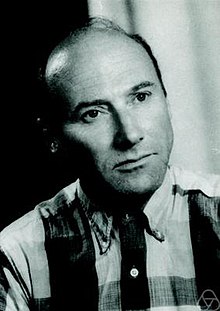Rudolf Haag
| Rudolf Haag | |
|---|---|
 |
|
| Born |
17 August 1922 Tübingen, Weimar Republic |
| Died | 5 January 2016 (aged 93) Neuhaus (Schliersee), Germany |
| Fields | Physics |
| Institutions |
Max Planck Institute, Princeton University, University of Marseille, University of Illinois at Urbana-Champaign, University of Hamburg |
| Alma mater | University of Stuttgart |
| Known for |
Haag–Kastler axioms No-go theorem Haag–Łopuszański–Sohnius theorem |
| Notable awards |
Max Planck medal (1970), International Association of Mathematical Physics (1997) |
Rudolf Haag (17 August 1922 – 5 January 2016) was a German physicist. He was best known for his contributions to the algebraic formulation of axiomatic quantum field theory, namely the Haag–Kastler axioms, and a central no-go theorem in QFT, Haag's theorem, which demonstrates the nonexistence of a unitary time-evolution operator in the interaction picture.
Haag was born in Tübingen, Germany. He studied Physics at Technische Hochschule Stuttgart, now the University of Stuttgart, from 1948 to 1954 and then worked on his dissertation in Munich. His supervisor was Fritz Bopp.
From 1956 to 1957 he was at Max Planck Institute in Göttingen. After doing one year each as visiting professor at Princeton University and University of Marseille, he was professor of physics at the University of Illinois at Urbana-Champaign for six years until 1966.
After that and until his retirement he held a chair for theoretical physics at the University of Hamburg.
In 1965 he founded the journal Communications in Mathematical Physics, which he guided as Chief Editor for eight years.
...
Wikipedia
